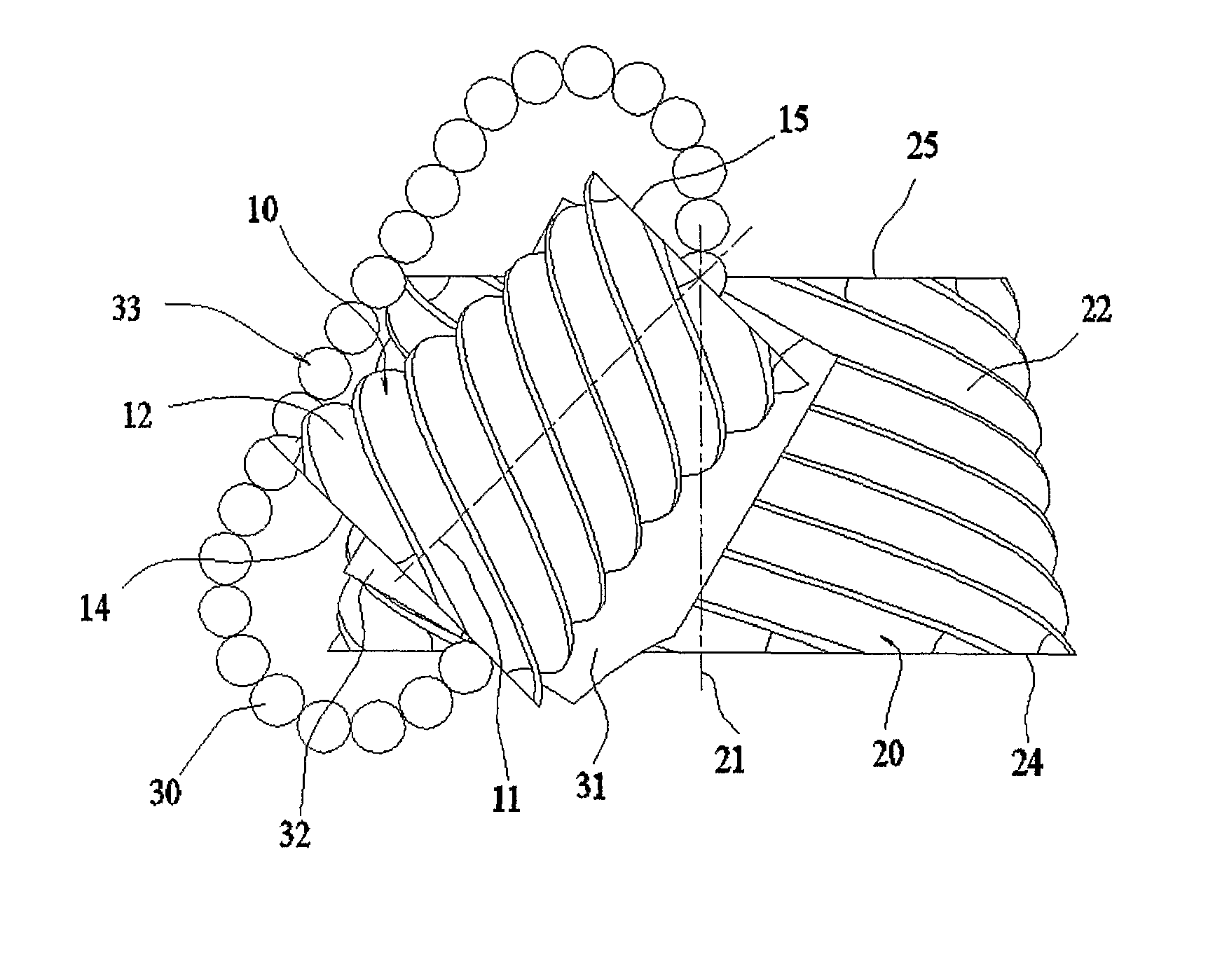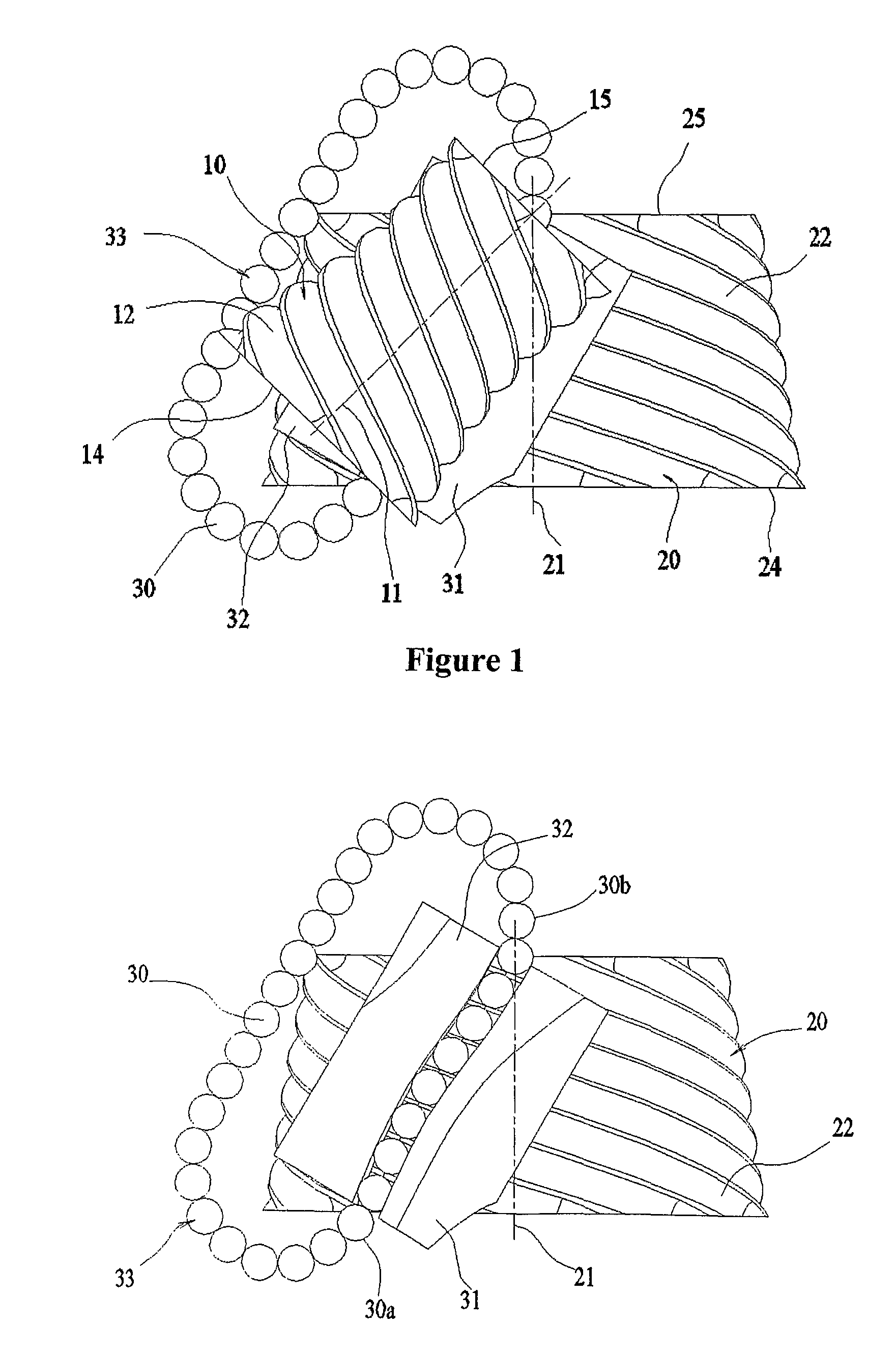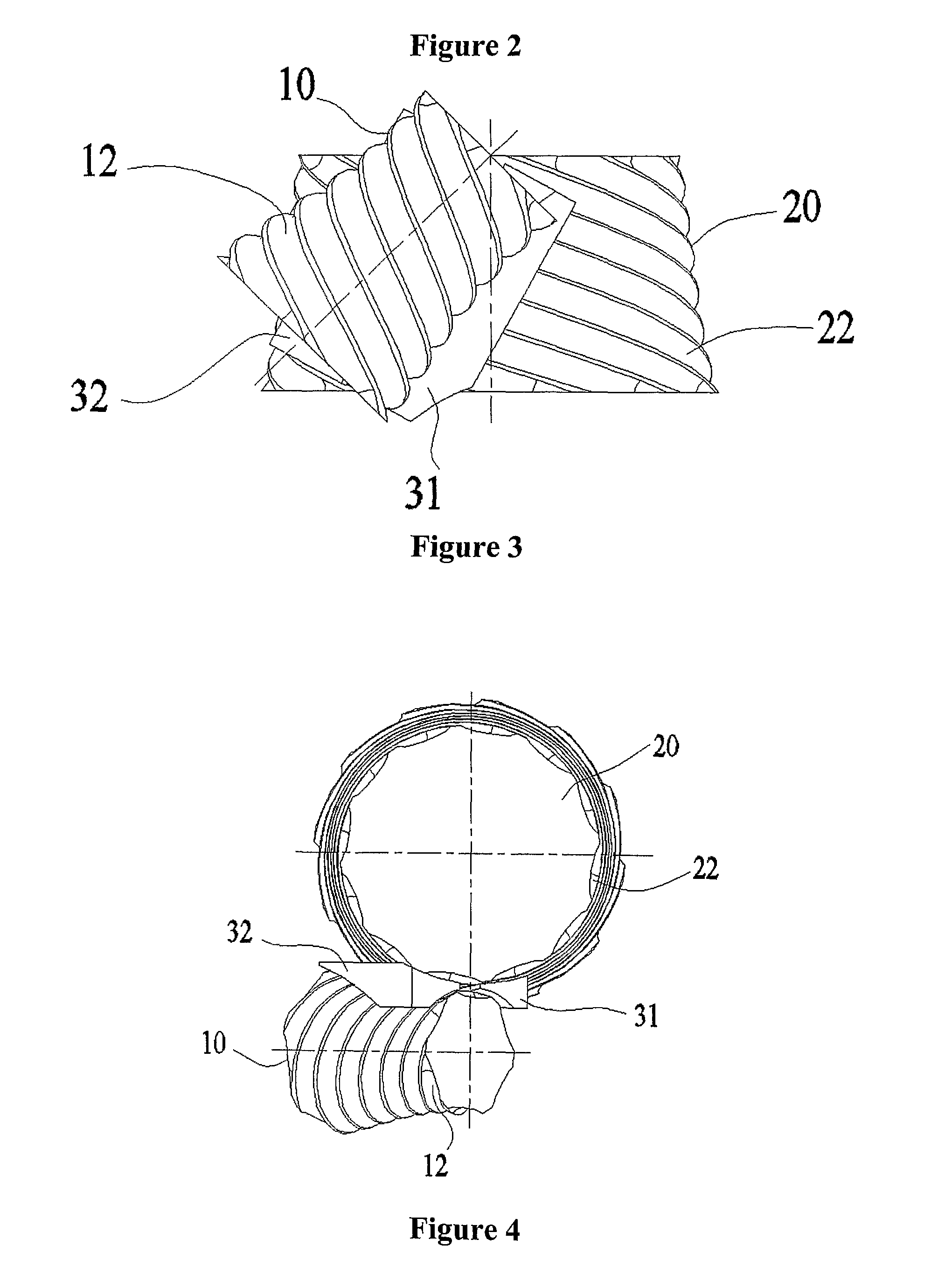Roller transmission and gearing mechanism
a transmission mechanism and roller technology, applied in the direction of gearing, gearing elements, hoisting equipment, etc., can solve the problems of not being able to achieve all the benefits, not being able to achieve the effects of reducing distance, facilitating entry and discharge of roller means, and reducing distan
- Summary
- Abstract
- Description
- Claims
- Application Information
AI Technical Summary
Benefits of technology
Problems solved by technology
Method used
Image
Examples
Embodiment Construction
[0074]In order to show the main parts and the main features of the roller transmission and gearing mechanism introduced in the present invention first an example for the basic design will be shown where the two bodies are two rotationally symmetric wheels set-up with their rotational axes forming skew lines with respect to each other and including an angle. FIG. 1 shows a schematic drawing of this design including first wheel 10 and second wheel 20 and their respective rotational axes 11 and 21. In the present description, “wheels” mean rotationally symmetric bodies that can rotate around their axes of symmetry but are fixed along their axial directions. Each body has either an inner or an outer rotationally symmetric surface centred at the rotational axis of the body onto which the roller guide tracks are developed. These surfaces will be referred to as track surfaces. The track surfaces are bounded by two separated limit surfaces that are typically but not always planes normal to ...
PUM
 Login to View More
Login to View More Abstract
Description
Claims
Application Information
 Login to View More
Login to View More - R&D
- Intellectual Property
- Life Sciences
- Materials
- Tech Scout
- Unparalleled Data Quality
- Higher Quality Content
- 60% Fewer Hallucinations
Browse by: Latest US Patents, China's latest patents, Technical Efficacy Thesaurus, Application Domain, Technology Topic, Popular Technical Reports.
© 2025 PatSnap. All rights reserved.Legal|Privacy policy|Modern Slavery Act Transparency Statement|Sitemap|About US| Contact US: help@patsnap.com



